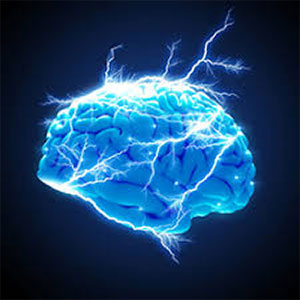Epilepsy is generally defined as a condition of the central nervous system when a group of neurons in one part of the brain or in total generates electrical discharges causing abnormal movements, sensation or behaviour. Epilepsy also means that person is liable to recurrence of this abnormal seizure activity. Having a single seizure doesn’t mean you have epilepsy. At least two unprovoked seizures are generally required for an epilepsy diagnosis.

In general, we categorise epilepsy as generalised or focal epilepsy depending on the area of brain involved and the clinical manifestation. Usually, epilepsy occurs in the childhood or aging brain due to brain atrophy and circulation insults that happen to the brain over time.
Childhood epilepsy could be secondary to a structural brain lesion or abnormal neuronal activity without any structural problem and this usually has a genetic predisposition with anomalous channel activity at the cellular level involving the sodium, potassium or calcium channels.
In older individuals, sudden onset of seizures should warrant investigations to find out the cause. In the elderly, seizures can occur due to metabolic abnormalities like low blood sodium level or hypoglycaemia. Severe infections can affect the brain and cause seizures. In these situations, it is not mandatory to treat these patients with ant-epileptic medications for a long time but it is absolutely essential to correct the underlying provoking factor.
When an adult or elderly patient suddenly gets a seizure without provocation then ideally, we do imaging of the brain, preferably MRI brain, to assess if there is any structural brain damage such as stroke or tumour.
Enquiring about the family history of seizures is important because in certain individuals with a family predisposition to seizures, there can be late occurrence of seizures. A functional test called an electroencephalogram (EEG) is mandatory to understand the type of seizure and liability to repeated seizures in the individual.
In many patients, the imaging will only show age-related brain atrophy and diffuse small circulation insults called microangiopathy but if this individual has had at least more than one seizure then it is crucial that we start the patient on anti-epileptic medication to prevent further seizures.
In many circumstances, when the patient has had one seizure and we don’t have a particular cause for seizure, then there is a dilemma over treatment with anti-epileptic medication and duration of treatment. So, in practical terms, it is a situation where we need to talk to patient and family regarding risk of another seizure and education about dos and don’ts. Treatment can also just be “SOS” medication if there is recurrence of seizure.
Underlying comorbidities, including diabetes, hypertension and kidney disease play an important role in determining the nature of long-term treatment. Individuals who have neurogenerative conditions such as dementia or progressive disease such as Parkinson’s disease are slightly more at risk of seizures. Or patients with previous history of strokes have a lower threshold for seizures, so in these patients, we do start regular anti-epileptic medicines even after a single seizure.
The decision to treat is almost a “To be, or not to be” soliloquy uttered by Prince Hamlet in William Shakespeare’s play!!! It is a decision to be made based on risks and benefit margins.
People may wonder why this decision is tricky? This is where we need to understand that drugs used for epilepsy or seizure management are powerful drugs that suppress the irregular neuronal activity in the brain and they do carry side effects. So, there is a lot of weightage given to the type of drugs selected that are suitable for elderly patients taking into consideration their background medical problems.
We need to choose the right drug which is safe for that patient and make sure it will not interact with the other medicines that the patient is already taking. Certain drugs can cause behavioural issues in older patients and are to be avoided however efficient they are, in preventing seizures.
Another situation that leads to a lot of deliberation is “syncope”. Basically, patient gets an episode with brief loss of consciousness without any clear pattern of abnormal jerking or any other movement and with quick recovery. This is still dangerous because the patient can fall during these episodes incurring injuries.
So, What Do We Do?
Here the causes again could be multiple such as cardiac especially with abnormal heart rhythms or heart block, could be neurological such as seizure or vascular insult. It could also be factors such as vertigo/ dizziness or blood pressure fluctuations, especially a sudden drop when the patient stands from a sitting or lying position called orthostatic hypotension. So, you can imagine, investigation about the cause is crucial and appropriate management is vital to prevent recurrence.
Therefore, in older adults, any late onset seizure or syncope requires thorough investigation and treatment protocols suitable for that patient to prevent recurrence and to ensure patient safety. Complicated decision making and patient/ family education about the condition is part of the management.
End of the day, the patient, family and the doctor are one team working towards one goal with the patient’s welfare in mind. Good understanding of the problem and discussion pave the way for better patient care.

Dr. Bhuvaneshwari Rajendran
Consultant Neurologist and Neurophysiologist
Kauvery Hospital, Chennai

